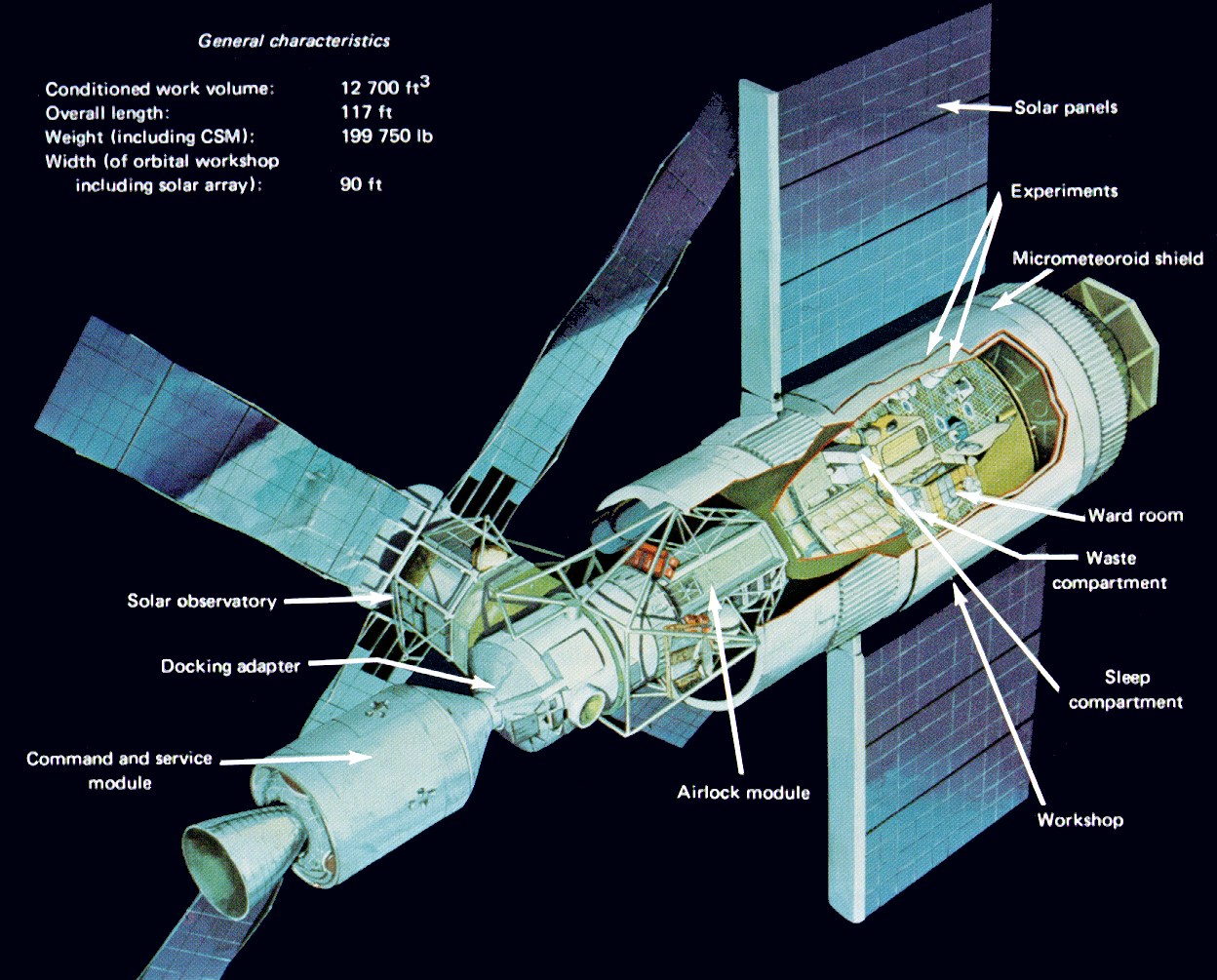- Skylab B
Infobox Space station
station = "Skylab B"
station_
station_image_size =
station_image_caption = The original Skylab space station. The back-up Skylab (or Skylab B) in storage would have been used to expand the Apollo-Soyuz mission by 56-90 days in 1975, if the Skylab B had not been scrapped in the first place
insignia =
insignia_size =
insignia_caption =
sign =Skylab B ,International Skylab ,Advanced Skylab
crew = 3
launch = canceled (currently at theNational Air and Space Museum inWashington D.C )
launch_pad =
reentry =
mass = 77,088 kg
length =
width =
height =
diameter =
volume =
pressure =
perigee =
apogee =
inclination =
altitude =
speed =
period =
orbits_day =
in_orbit =
occupied = planned 56 to 90 days
orbits =
distance =
as_of =
stats_ref =
configuration_
configuration_size =
configuration_caption =Skylab B was a concept for a second US
space station similar toSkylab that was planned to be launched byNASA for different purposes, mostly involving the Apollo-Soyuz Test Project, but was canceled due to lack of funding. Two Skylabs were made byMcDonnell Douglas for the Skylab program, originally theApollo Applications Program , in 1970, one launched in 1973 and the other put in storage and considered as Skylab B.Plans
Numerous plans for the Skylab B station included putting it into a mode where it could generate artificial gravity, or to celebrate the 1976
United States Bicentennial with the launch of two Soviet Soyuz missions to the back-up Skylab.When the
Apollo-Soyuz Test Project was created in 1972, NASA had an idea of launching the back-up Skylab station during the ASTP mission in 1975, which would involve theApollo spacecraft docking with theSoyuz spacecraft first, performing intended operations, then heading for the Skylab B, which during the ASTP discussion was originally called the International Skylab, for a 56-90 days extended mission.For future missions, the station, which would have then be called the Advanced Skylab, could have been expanded by the
space shuttle due to enter service in 1981, after the original Skylab station re-entered in 1979, the year the shuttle was expected to make its maiden flight. At the time the idea was discussed, NASA still had twoSaturn V launchers, threeSaturn IB boosters, the back-up Skylab space station, three Apollo CSMs and twoLunar Module s in storage.After the original Skylab was launched in May 1973, the plan for the Skylab B was distinctly canceled and the Apollo/Soyuz spacecraft had to use the Docking Module launched on the Apollo-Saturn IB for performing experiments in space. After Project Apollo ended and as NASA was moving to developing the space shuttle, the remaining Apollo hardware was donated to museums in 1976. In the meantime, if the Skylab B space station had been launched in the first place, it would have been the
United States ' second space station launched apart from theInternational Space Station , which is now in orbit and under construction, although it also contains different space station modules developed by other countries.The so-called Skylab B can be seen at the
National Air and Space Museum inWashington D.C .References
* Frieling, Thomas J, "Quest", "Skylab B: Unflown Missions, Lost Opportunities", 1996, Volume 5, Issue 4, page 12.
External links
* [http://www.astronautix.com/flights/skylabb.htm Skylab B (Astronautix)]
Wikimedia Foundation. 2010.
